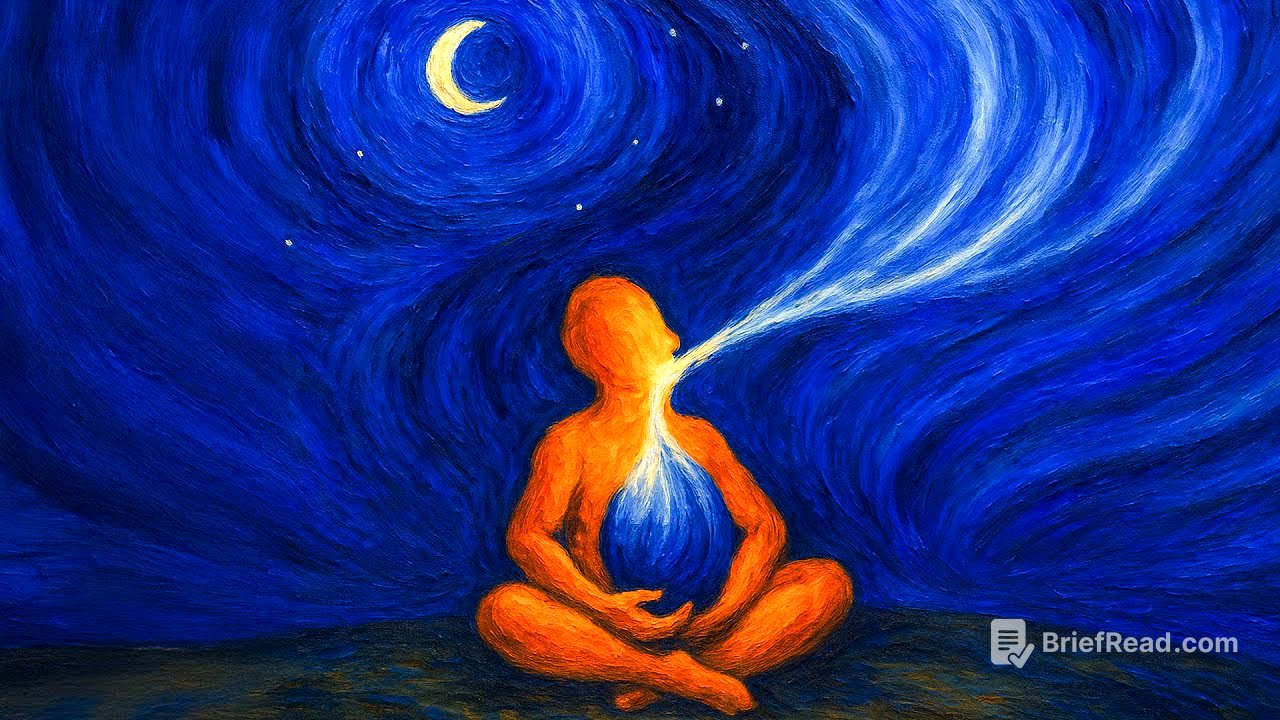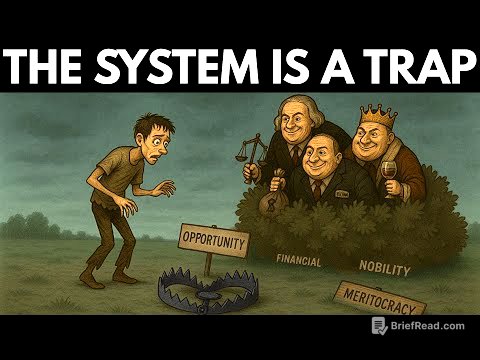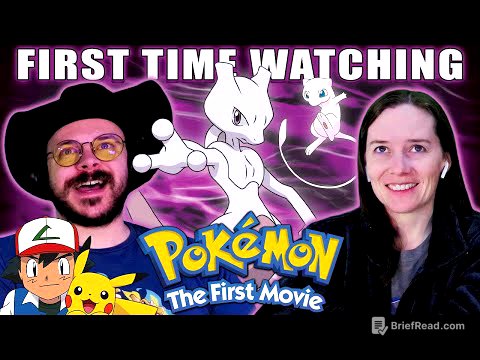TLDR;
This video explores how to quiet the constant noise of the mind through observation and non-resistance, rather than forceful suppression. It emphasizes recognizing thoughts without engaging with them, creating space for inner peace. Key points include:
- Thoughts disappear when not fueled by attention.
- The problem isn't the mind, but the constant effort to control it.
- True rest comes from observing thoughts without interference.
- Stopping the mind is about recognizing you are not your thoughts.
- Peace is already present, obscured by mental chatter.
Introduction: The Weariness of Constant Thought [0:00]
The video starts by describing the exhausting experience of a constantly active mind, one that chatters incessantly even in moments of silence. This internal voice replays memories, fuels anxieties, makes plans, and generally prevents true relaxation. The speaker highlights the common feeling of mental exhaustion, where the mind races from the moment you wake up until you fall asleep, and sometimes even continues during sleep.
The Futility of Fighting the Mind [0:45]
The video critiques common advice to "stop your thoughts," pointing out that such instructions rarely come with practical guidance. Techniques like meditation, controlled breathing, and mantras might offer temporary relief, but often fail in the long run because they involve the mind trying to control itself. This creates an internal conflict, where the mind resists being silenced, leading to a cycle of trying to calm the mind with more mental effort. The speaker notes that even experienced meditators can struggle with quieting their minds if they approach it as a battle.
The Key: Observation Without Interference [1:59]
The speaker introduces a subtle but transformative step: observing thoughts without engaging with them. Thoughts arise spontaneously, like a movie playing without your explicit consent. The key is to recognize that you are not the screen or the actor, but the one who notices the movie. The video advises against interfering, commenting, or continuing the thought. Instead, acknowledge the thought, say "Okay," and return your attention to the present moment, focusing on sensations like breath or the body's weight.
The Pause: A Glimpse of Peace [2:52]
By not engaging with thoughts, a brief pause emerges—a moment without anxiety, analysis, or anticipation. This pause, even if just a fraction of a second, represents a cessation of mental activity. The speaker cautions against expecting a grand, extended silence, emphasizing that stopping the mind happens incrementally, each time you choose not to pursue a thought.
Maintaining Attentiveness and Avoiding Expectations [3:22]
The video stresses the importance of staying attentive without actively seeking silence. The goal isn't to achieve a silent mind, as anticipating silence can ironically perpetuate mental activity. Instead, the advice is to simply let thoughts pass without resistance, like hearing a distant sound and allowing it to fade away. While thoughts will inevitably return, each instance of non-engagement weakens their hold.
Becoming a Witness: The Dissolution of Internal Conflict [3:58]
By becoming a non-interfering witness to your thoughts, you cease to be a participant, judge, or rescuer in the internal drama. The mind, lacking engagement, loses energy. It presents conflicts, memories, and stories, but you no longer subscribe to them. Peace isn't something to be attained, but rather something that reveals itself when the constant commentary subsides.
The River Analogy: Thoughts as a Stream [4:20]
The speaker uses the analogy of sitting by a river to illustrate the concept. You can either focus on each individual wave and swirl, or simply listen to the overall sound of the stream without fixating on specific details. Similarly, you can choose to follow each thought or simply observe the general background of consciousness.
Recognition, Not Silence: Understanding Your True Nature [4:44]
Stopping the mind isn't about achieving a state of complete silence, but about recognizing that you are not your thoughts. This recognition dissolves the internal dialogue because the one who was conducting it is no longer needed. You are not the voice in your head, the story it tells, or any of the roles it creates. Instead, you are the silence in which all of this noise occurs.
The Simplicity of Non-Interference [5:07]
The video emphasizes that achieving this state is easier than it seems. Just as you can choose to stop an external conversation, the mind can quiet down if you don't engage with it, support it, or take it too seriously. Sometimes, all that's needed is to not react or respond to the invitation to think. Thoughts come and go, leaving you present.
Attention as the Key [5:34]
Attention, clear and gentle, is the key. It's not about effort, struggle, or technique, but about simply observing without trying to change anything. Everything is already calm and present. The speaker encourages viewers to try it immediately, noticing the current thought without developing it, allowing it to dissolve like a cloud in the sky.
The Fullness of the Pause [6:02]
The pause between thoughts isn't emptiness, but fullness—a peace that doesn't depend on external circumstances. This is what remains when the mental chatter ceases. Many fear silence, believing that without thoughts they will cease to exist. However, the opposite is true: without thoughts, you begin to truly live.
Life Beyond Thought [6:39]
Life isn't a story in your head, but what's happening in the present moment. Breathing, heartbeat, and life itself occur spontaneously, without commentary, plans, or fears. While thoughts are useful for planning and problem-solving, they aren't necessary for life itself. When you realize this, you stop fearing silence, stop filling every moment with thoughts, and allow yourself to simply be.
The Natural Cessation of Internal Dialogue [7:19]
The internal dialogue stops on its own, not through effort, but because you stop interfering with it. The video concludes by inviting viewers to share their experiences of finding a moment of silence and encourages them to embrace life without the constant internal narration.








